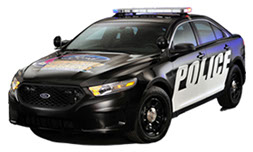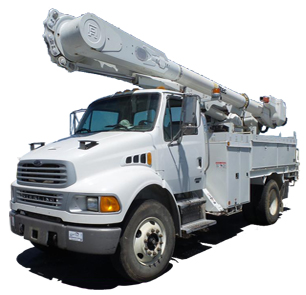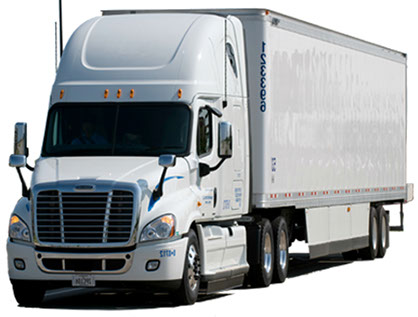Idle Reduction Technology
What is idle reduction technology (IRT) and what are their benefits? Idle reduction technology is a wide range of commercially available equipment or devices that are installed on or retrofitted to light-, medium-, and heavy-duty vehicle fleets that usually by necessity practice prolonged idling. IRT can greatly reduce idle time and save money in fuel use and engine wear, including avoidance of ghost miles on engines (every hour of idling equals about 30 miles a vehicle can travel). Further, IRT will decrease criteria pollutant emissions, greenhouse gas emissions, and noise. IRT can help an increasing number of commercial and municipal fleets interested in meeting financial, environmental, and energy sustainability goals.
IRT provides an alternate (electrical) energy source to replace the idling engine that would normally power the vehicle’s electrical loads. Some IRT equipment can also be configured to provide heat to the vehicle cabin and/or the ambulance box. IRT examples include (but are not limited to) combustion engine auxiliary power unit (APU) generator sets; battery APUs; electronic control units that manage engine operation to turn off the engine after a set time limit is reached; and electrified parking spaces (EPSs). The amount by which engine idling is reduced varies by technology, the system design, the vehicle type, and the vehicle’s duty cycle.
IRT COST FACTORS: These systems, per vehicle, vary widely in cost, from a few hundred dollars to $10,000 or more. There are environmental and energy benefits to help defray the cost of IRT systems. These are typically local, state and federal incentives such as grants funded by clean fleet policies, sustainability initiatives, rebates and vouchers, and tax exemptions. These systems will pay for themselves over a period of time that can range from 90 days to three years depending on such factors as rate of idling, number of hours per week of usage, average price of fuel, fuel consumption rate, and engine/exhaust system maintenance due to idling.
IRT Types within Vehicle Applications
From Dept. of Energy - Alternative Fuels Data Center - Idle Reduction
LIGHT-DUTY VEHICLES
Light-duty vehicles include passenger cars, and fleet vehicles, such as livery vehicles and taxis. For passenger cars that must stand for long periods, such as cabs, limousines, and police cars, auxiliary power systems and air heaters are good alternatives to idling.
and taxis. For passenger cars that must stand for long periods, such as cabs, limousines, and police cars, auxiliary power systems and air heaters are good alternatives to idling.
Auxiliary Power Systems - Provide heating, cooling, and electronic device power without running the vehicle's engine. These systems are useful for police vehicles, which require power for comfort, communications, emergency lighting, and HVAC while stopped. Such systems, which can be powered by lead-acid or lithium-ion batteries, are charged by the vehicle’s engine when it is being driven.
Air Heaters - Drivers more concerned with passenger compartment warmth—such as taxi and limousine drivers—might prefer air heaters. Although they operate on engine fuel, air heaters are separate, self-contained units that blow hot air directly into the vehicle interior. Air heaters also use very little fuel.
Automatic Power Management Systems - Allow the driver to turn off the vehicle engine and use battery power to run a vehicle's HVAC and other accessories without worrying about battery depletion. The systems monitor battery power levels while the engine is off and accessories powered by electricity are on. When battery state-of-charge falls below a preset level, the power management system restarts the engine and keeps it running until battery power returns to a predetermined level.
Waste-Heat Recovery Systems - An energy recovery system that keeps a vehicle warm using the vehicle's heat-transfer system. A very small electric pump is connected to the water line, which keeps the vehicle's cooling system and heater operating after the engine is turned off by using engine heat that would otherwise dissipate. Energy recovery systems keep the passenger compartment warm.
MEDIUM-DUTY VEHICLES
Alternatives to idling for medium-duty vehicles depend on how the vehicle is used. Most medium-duty truck idling happens during working hours. The idling may be confined to short stretches of time, or it might be quite long, as in the case of utility trucks that are parked for long periods but need power for performing work. Possible idle reduction technologies include:
used. Most medium-duty truck idling happens during working hours. The idling may be confined to short stretches of time, or it might be quite long, as in the case of utility trucks that are parked for long periods but need power for performing work. Possible idle reduction technologies include:
Air Heaters - Useful for medium-duty trucks that primarily idle for comfort in the passenger compartment. Although they operate on engine fuel, air heaters are more efficient, separate, self-contained units that blow hot air directly into the vehicle interior.
Coolant Heaters - Use the vehicle's regular heat-transfer system and are mounted in the engine compartment. The heater draws gasoline or diesel from the fuel tank to heat the vehicle's coolant and pumps the heated coolant through the engine, radiator, and heater box. Coolant heaters keep the engine warm, reducing the impact of cold starts.
Waste-Heat Recovery Systems - An energy recovery system that keeps a vehicle warm using the vehicle's heat-transfer system much like a coolant heater but without a separate heater. A very small electric pump is connected to the water line, which keeps the vehicle's cooling system and heater operating after the engine is turned off, using engine heat that would otherwise dissipate.
Battery/Auxiliary Power Systems - For medium-duty trucks that require power take-off throughout the day, a secondary power plant, storage battery, or hydraulic storage system can be an excellent solution. In the case of a battery, it can be mounted in the back of the truck and charged overnight and recharged if needed during the day. In the case of an auxiliary power unit, it can have a small diesel engine like a generator, which uses less fuel and produces fewer emissions than an idling vehicle's main engine would.
IRT FOR HEAVY-DUTY VEHICLES (ON-BOARD EQUIPMENT)
Heavy-duty truck drivers can choose from a variety of equipment to reduce idle time and save fuel. Argonne National Laboratory estimates that more than one million long-haul heavy-duty trucks idle during required rest stops every day. Reducing the amount of fuel consumed during idling can provide significant cost savings. In addition, many idle reduction technologies can improve driver comfort through improved climate control, support for lighting and electronics, better air quality, and reduced noise levels.
equipment to reduce idle time and save fuel. Argonne National Laboratory estimates that more than one million long-haul heavy-duty trucks idle during required rest stops every day. Reducing the amount of fuel consumed during idling can provide significant cost savings. In addition, many idle reduction technologies can improve driver comfort through improved climate control, support for lighting and electronics, better air quality, and reduced noise levels.
On-board equipment options can easily be installed on heavy-duty trucks and can help reduce idle time at truck stops, roadsides, ports, terminals, and delivery sites. The cost-effectiveness of each technology depends on the climate in which it is used and the duration of idling.
Auxiliary Power Units (APUs) - Portable, vehicle-mounted systems that provide power for climate control and electrical devices in trucks, locomotives, and marine vehicles without idling. These systems are generally composed of a small internal combustion engine (usually diesel) equipped with a generator to provide electricity and heat.
Cab or Bunk Heaters - These diesel-fired heaters supply warm air to the cab or bunk. An engine block heater can also be included. Diesel heaters use only small amounts of fuel and have very low emissions because they supply heat directly from a small combustion flame to a heat exchanger. Standard diesel fuel is generally used, but natural gas-fired heaters are also available. Cab or bunk heaters can be coupled with air conditioners if the trucker's service area includes both cold winters and hot summers.
Coolant Heaters - Use the truck's regular heat-transfer system. The heater is mounted in the engine compartment, draws gasoline or diesel from the fuel tank to heat the vehicle's coolant, and pumps the heated coolant through the engine, radiator, and heater box. Coolant heaters keep the engine warm, reducing the impact of cold starts.
Energy Recovery System - Use the vehicle's heat-transfer system, much like a coolant heater, but without a separate piece of equipment. A very small electric pump is connected to the water line, which keeps the truck's cooling system and heater operating after the engine is turned off, using engine heat that would otherwise dissipate. Energy recovery systems typically do not provide enough warmth to be a sole source of overnight heat.
Storage Air Conditioners - Thermal storage and battery-electric air conditioners (storage cooling) derive energy to recharge the storage device from the truck's engine during operation or from plugging in to external power sources at truck stops. The engine uses a small quantity of extra diesel for recharging the air conditioner. The emissions from burning this fuel (which are controlled by the engine's emissions control system) occur on the highway rather than at the truck stop or depot.
Automatic Engine Stop-Start Controls - Can sense sleeper compartment temperature and automatically turn the engine on when the sleeper is too warm or cold. Fuel savings using this technology are minimal in extreme temperatures. The extra starts also add to engine wear and may disturb the driver's sleep.
U.S. EPA SmartWay Verified List of Idling Reduction Technologies (IRTs)
NOTE: This listing does not include IRTs such as Power Management Systems for light- and medium-duty vehicles.
Argonne National Laboratory 2018 listing of IRTs
NOTE: This listing does include IRTs such as Power Management Systems for light- and medium-duty vehicles.
(downloads as Excel document from ANL webpage)
Battery or Diesel system?
Determining the right solution will largely rest on the needs of the individual fleet. Both diesel-powered and electric APUs are reliable, cost-effective alternatives to idling and both offer viable options for fleets—but much is based on fleet discretion.
“Battery systems have come a long way and offer a more maintenance-free solution. Diesel APUs offer more robust A/C output and auxiliary on-board power, but require a higher level of maintenance considerations,” stated Dale Peay, vice president of regional sales for Espar Climate Systems. “Both offer fuel-operated heater options to extend battery run-times or reduce fuel use/engine wear. In each case, the objective of idle-reduction is achieved based on specific fleet needs and technology experience.”
